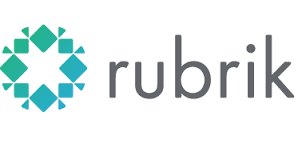 After having gone through all holiday email it is now time to go over some of the briefings. The Rubrik briefing caught my eye as it had some big news in there. First of all, they landed Series C, big congrats, especially considering the size, $ 61m is a pretty substantial I must say! Now I am not a financial analyst, so I am not going to spend time talking too much about it, as the introduction of a new version of their solution is more interesting to most of you. So what did Rubrik announce with version 3 aka Firefly.
After having gone through all holiday email it is now time to go over some of the briefings. The Rubrik briefing caught my eye as it had some big news in there. First of all, they landed Series C, big congrats, especially considering the size, $ 61m is a pretty substantial I must say! Now I am not a financial analyst, so I am not going to spend time talking too much about it, as the introduction of a new version of their solution is more interesting to most of you. So what did Rubrik announce with version 3 aka Firefly.
First of all, the “Converged Data Management” term seems to be gone and “Cloud Data Management” was introduced, and to be honest I prefer “Cloud Data Management”. Mainly because data management is not just about data in your datacenter, but data in many different locations, which typically is the case for archival or backup data. So that is the marketing part, what was announced in terms of functionality?
Version 3.0 of Rubrik supports:
- Physical Linux workloads
- Physical SQL
- Edge virtual appliance (for ROBO for instance)
- Erasure Coding
When it comes to physical SQL and Linux support it is probably unnecessary, but you will be able to backup those systems using the same policy driven / SLA concepts Rubrik already provides in their UI. For those who didn’t read my other articles on Rubrik, policy based backup/data management (or SLA domains as they call it) is their big thing. No longer do you create a backup schedule. You create an SLA and assign that SLA to a workload or a group even. And now this concept applies to SQL and physical Linux as well, which is great if you still have physical workloads in your datacenter! Connecting to SQL is straight forward, there is a connector service which is a simple MSI that needs to be installed.
Now all that data can be store in AWS S3 and for instance Microsoft Azure in the public cloud or maybe in a privately deployed Scality solution. Great thing about the different tiers of storage is that you qualify the tiers in their solution and data flows between it as defined in your workload SLA. This also goes for the announced Edge virtual appliance. This basically is a virtualized version of the Rubrik appliance, which allows you to deploy a solution in ROBO offices. Through the SLA you bring data to your main data center, but you can also keep “locally cached” copies so that restores are fast.
Finally, Rubrik used mirroring in previous versions to safely store data. Very similar to VMware Virtual SAN they now introduce Erasure Coding. Which means that they will be able to store data more efficiently, and according to Chris Wahl at no performance cost.
Overall an interesting 3.0 release of their platform. If you are looking for a new backup/data management solution, definitely one to keep your eye on.
 And yes before some of my community friends will go nuts and point at Veeam and some of the great stuff they have introduced over the last 10 years, I am talking more broadly here. Many of my customers are still using the same backup solution they used 10-15 years ago, yes it is a different version probably, but all the same concepts apply. Well maybe tapes have been replaced by virtual tape libraries stored on a disk system somewhere, but that is about it. The world of backup/recovery hasn’t evolved really.
And yes before some of my community friends will go nuts and point at Veeam and some of the great stuff they have introduced over the last 10 years, I am talking more broadly here. Many of my customers are still using the same backup solution they used 10-15 years ago, yes it is a different version probably, but all the same concepts apply. Well maybe tapes have been replaced by virtual tape libraries stored on a disk system somewhere, but that is about it. The world of backup/recovery hasn’t evolved really.